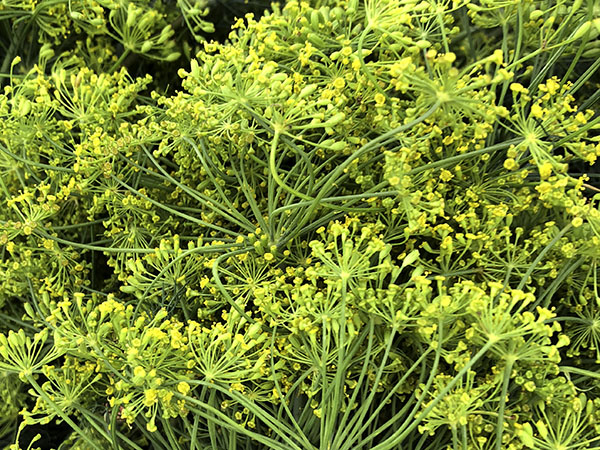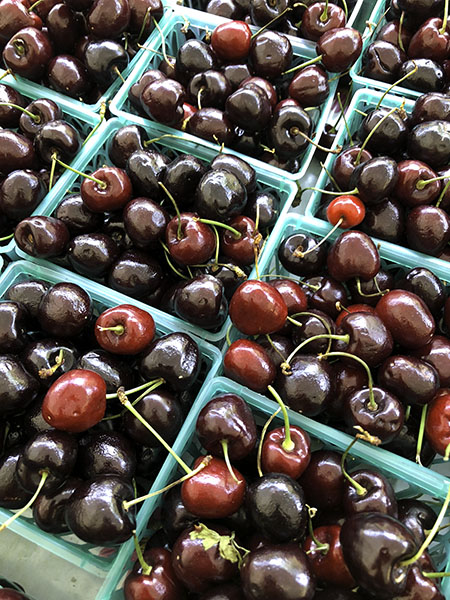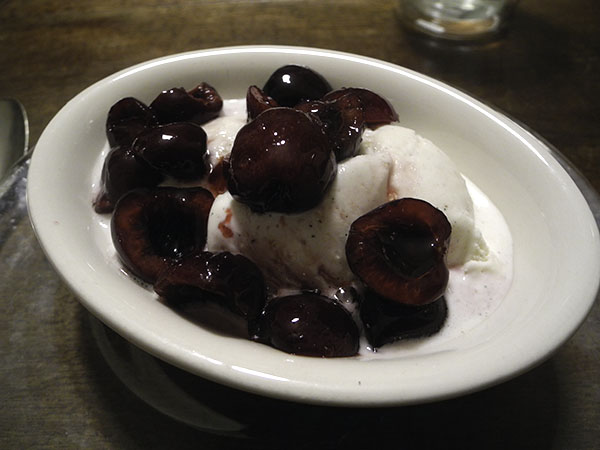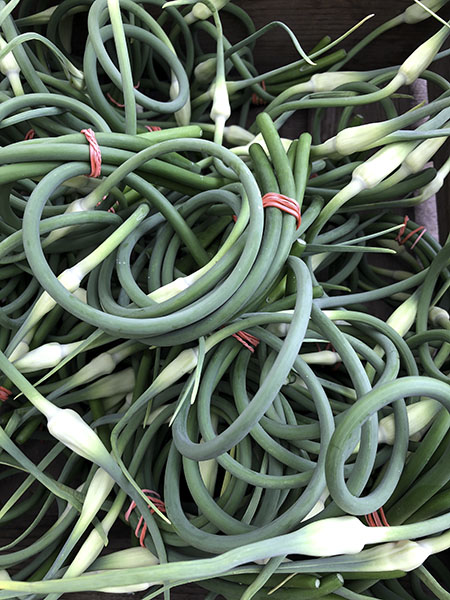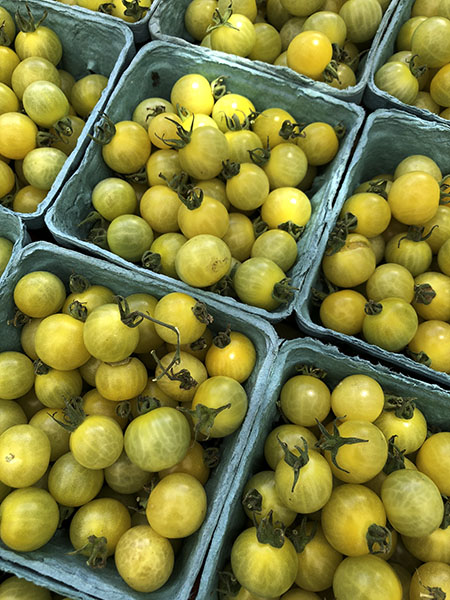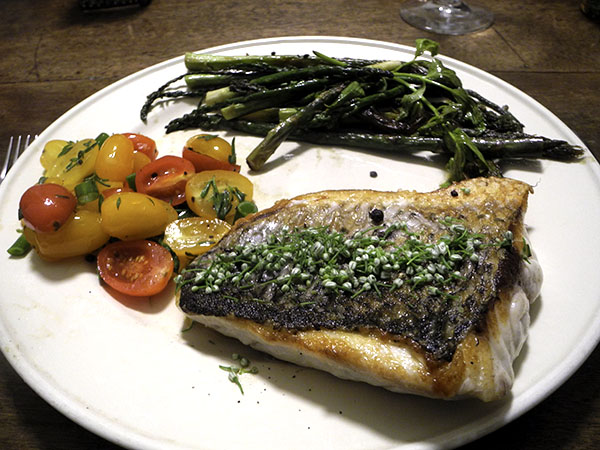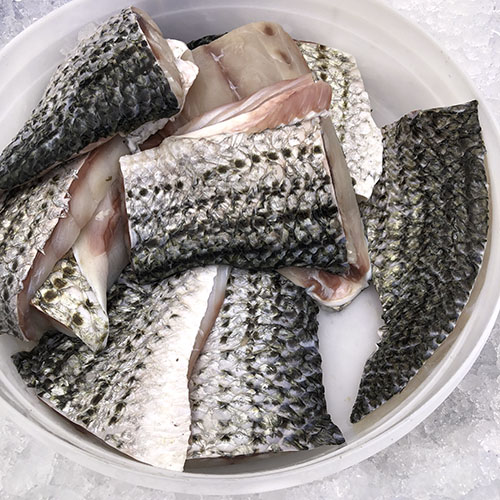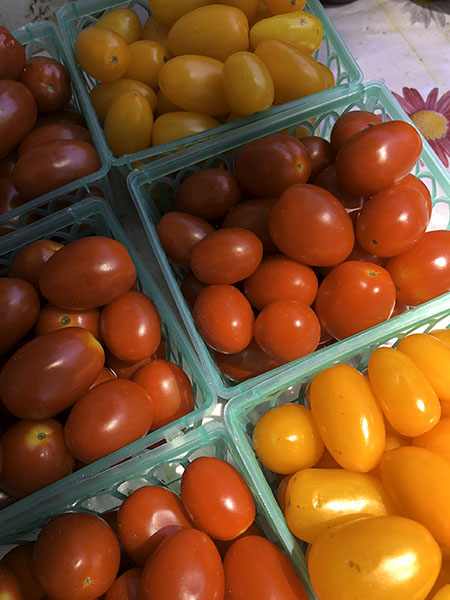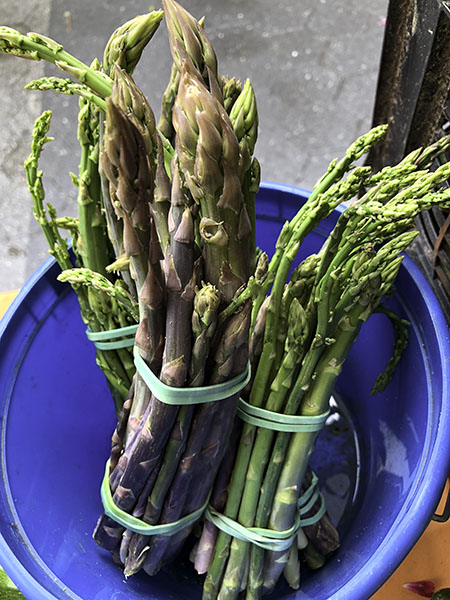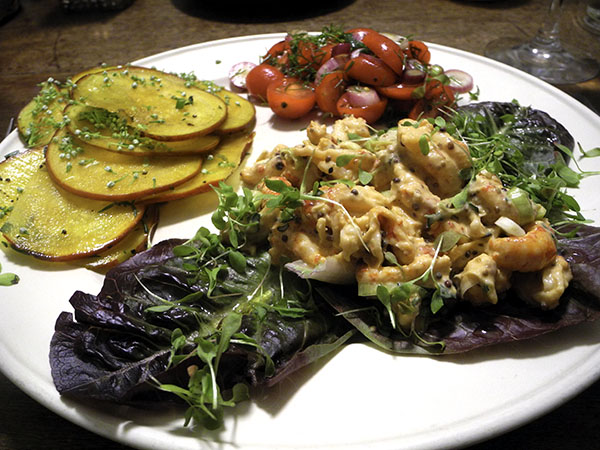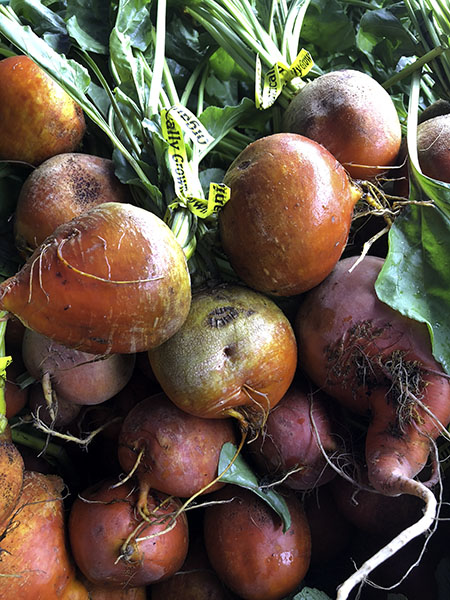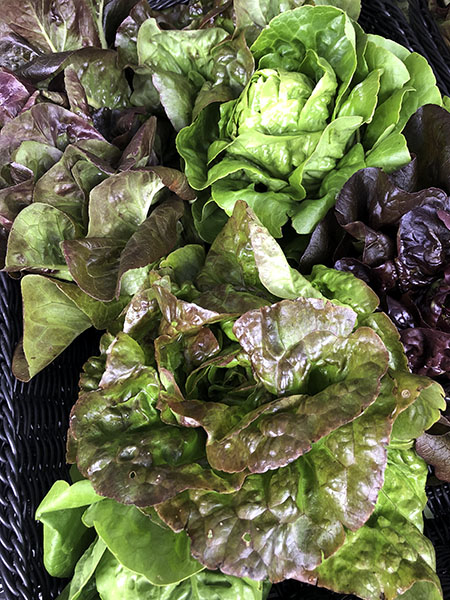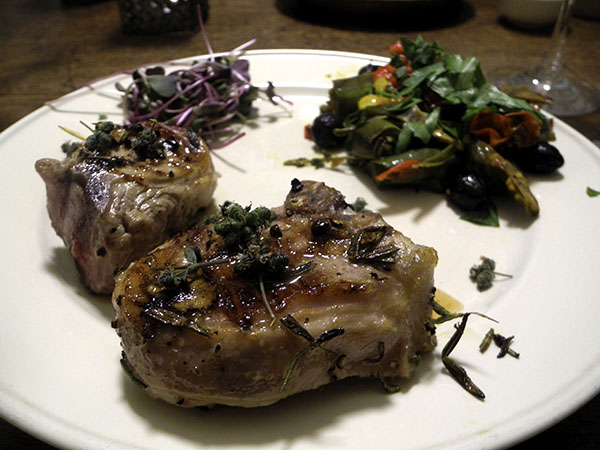
These were quite possibly the most delicious goat chops either of us had ever had. This makes me very happy, because, for what it may be worth, I don’t think either or I have ever been served goat chops outside of our own home. I’m going to share my happiness with Lynn Fleming, the local goat breeder from whom I had purchased the meat, commending her for the quality of her production.
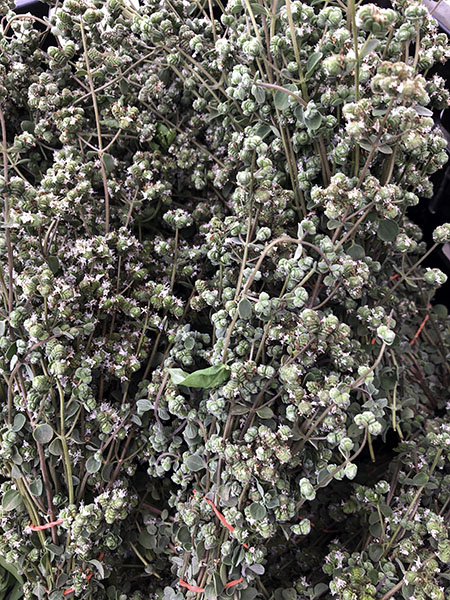
The extraordinarily pungent marjoram flowers were stars too,..

..even if they couldn’t rival the splashy color of the micro radish.
- four loin goat chops, each averaging just over 4 ounces, from Lynnhaven Dairy Goat Farm, marinated for about 45 minutes in a mix of a couple tablespoons of olive oil, 2 small sliced cloves of fresh garlic from from Alex’s Tomato Farm, freshly-ground black pepper, 8 slightly-crushed juniper berries, some roughly-chopped rosemary from Phillips Farms, one medium crushed bay leaf from Westside Market, and a little zest from an organic Whole Foods Market lemon, then pan-grilled for a few minutes, turning 3 times, seasoned with salt and freshly-ground pepper after the first time, finished with a bit of a fortunate nicety, some tomato water that remained from an earlier meal, plus some very aromatic marjoram flowers from Stokes Farm, and a drizzle of olive oil
- a knob of purple micro radish from Windfall Farms, as a plate garnish
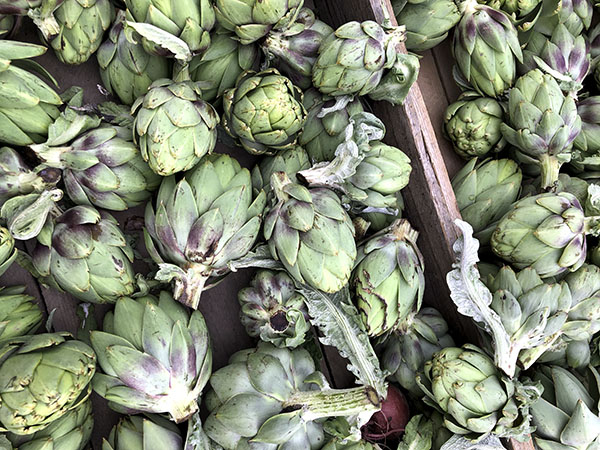
- a vegetable assembly that began with preparing 10 or 12 small, one-ounce artichokes from Alewife Farm (removing the outer leaves, trimming the stem, cutting off the top third, slicing in half lengthwise) while a little olive oil and 2 smashed fresh garlic cloves, again from Alex’s Tomato Farm, were heated inside a large antique copper pot over low heat, and when the oil began to sizzle, a handful of oil-cured black olives, a few branches of fresh thyme from Campo Rosso Farm, a pinch of sea salt, and the artichoke halves (cut side down) were added, the heat raised a bit and the chokes moved around until they had browned, when a handful of a mix of ‘wild Mex tomatoes‘ and Coyote tomatoes, both from Eckerton Hill Farm, was added, along with a splash of water, and everything cooked until the chokes were tender, the pot covered for part of the time, the dish seasoned to taste and served [NOTE: it can also be served at room temperature, which makes this recipe very convenient]
- the wine was a zinfandel a California (Lodi) red, Karen Birmingham Reserve Zinfandel Lodi 2015, from Naked Wines
- the music was Carl Heinrich Graun’s 1755 opera, ‘Montezuma’, Johannes Goritzki conducting the German Chamber Academy Neuss and the Cantica Nova Chamber Choir
* although not really a caponata at all, it turned out to be an excellent accompaniment for the goat


